
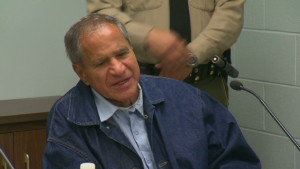
We received the following correspondence from William Pepper, Esq. (attorney for the accused assassin of Senator Robert F. Kennedy, Sirhan Sirhan) who has been engaged in a long effort to secure his client’s release from prison for a crime he did not commit. Unlike Lee Harvey Oswald–the accused assassin of President John F. Kennedy, who did not live to stand trial–the accused assassin of the slain President’s brother, Robert F. Kennedy, Sirhan Bishara Sirhan, is alive–if one can call serving a life sentence for crimes he did not commit “living.”
Dear All,
As a follow up to reports we have received, and as we near a first real opportunity to argue this case before the Ninth Circuit, there may indeed be a move in process to eliminate Sirhan. He believes that he is being stalked by a particular inmate. He is not an alarmist.
Please use all means to let the Warden and any available media know of this concern.
Sirhan is currently at the RICHARD J. DONOVAN PRISON, 2180 Alta Rd., San Diego 92179. The Warden is DANIEL PARAMO and I believe that the phone number is 619 661 6500.
Thanks for any help you may render. The Ninth Circuit Panel is considering the COA Request we have filed which is attached hereto.
As ever,
Bill Pepper
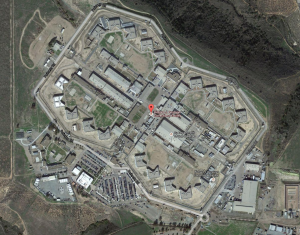
Sirhan is currently imprisoned at Donovan State Correctional Facility in South San Diego County. Also attached to the correspondence is a copy of the Request for a Certificate of Appealability (COA), which was filed with the 9th Circuit Panel and is currently under review.
I encourage all interested parties to read the Request for COA (below) in which Mr. Pepper discusses the egregiously improper representation that previous counsel provided to the accused during his murder trial. According to Mr. Pepper, Sirhan’s Constitutional Rights under both the 6th and 14th Amendments were violated. After reading the entire COA, I am convinced that this was, in fact, the case. There are multiple areas of grave concern that Pepper lays out in his argument(s). Each appear to be thoroughly researched and well supported. I further urge you to contact Warden DANIEL PARAMO at the phone number Mr. Pepper provided above. Let him know that eyes are watching what happens and that we don’t want another “Jack Ruby incident” occurring at the Eleventh Hour.
To describe what has transpired in the past 46 years with regard to the disposition of Sirhan Sirhan’s case as a “travesty of justice” is the understatement of the century. In the 1990’s I myself spoke at length with former Los Angeles Coroner, Thomas Noguchi, by telephone. Noguchi is the Medical Examiner who performed the autopsy on Senator Kennedy. Noguchi told me that whoever fired the fatal shot into the Senator’s brain was located to the rear of RFK and the shot was fired at point blank range–from no more than 1.5 inches away. As we know, Sirhan was never behind Senator Kennedy. All eyewitness accounts place him several feet away from the Senator and, at all times, directly in front.
If the document below doesn’t display properly, simply refresh your browser.


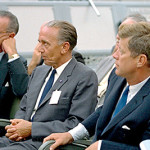
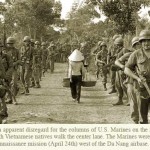

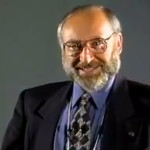
to leave him living dead without real trial but not murdered as first patsy inclined operative as in a civil in 1999 we finally got with MLK, and as Junior was taken out before ever running it is a neat little package all built of lies compounding under a god they trust not to exist red and white is pink but oh so blue
a simple little red death pill unfortunately so manyy created in last 50 years
Greg once again how can we fb and twutter for max exposure the more people who know the greater the question against suspicious actions?
I called,and I rememberI got laughter when I called about Jim Garrison back in the early 1990’s
Forgive me for introducing this material into this issue, but without this knowledge, its like playing poker for high stakes, in Las Vegas, blindfolded:
THE VATICAN’S HOLOCAUST
The sensational account of the most horrifying religious massacre of the 20th century
By Avro Manhattan
Chapter 1
NEW NATIONS FROM OLD ONES
When in 1917, during the First World War, the Papal Nuncio in Munich, E. Pacelli, secretly negotiated with the Central Powers to accomplish the Pope’s Peace without Victory, in order to save both Germany and Austria-Hungary from defeat, he had already made his first attempt to strangle a nation as yet unborn; Yugoslavia. If the Vatican’s attempt was directed at preserving its most useful Hapsburg lay partner, it simultaneously had another no less important goal: to prevent a motley of nationalities from springing out of the Empire’s ruins as sovereign States in their own right. In such States, Poland excepted, Catholicism would have sunk to the level of a minority.
Worse, it would have been dominated by heretical churches and their political Allies: i.e. by the Protestant and Liberal in Czechoslovakia, by the Orthodox in Yugoslavia. With its last attempt to save the Austro-Hungarian Empire, the Vatican therefore struck a final blow against the yet unborn “Hussite” Czechs and the Catholic Slovaks on one side, and the Orthodox Serbs and Catholic Croats and Slovenes on the other, the fulfillment of their dreams lying as it did in the disintegration of the Austro-Hungarian colossus.
The Emperor Charles was advised to transform the Empire into a Federation. The idea, which originated at the Vatican, was repellent to both, as it meant, besides the loosening of Imperial control, the loosening of Catholic control over the various races of the tottering Empire. But in the circumstances the alternative was total collapse. In October Charles announced the transformation of the Hapsburg Monarchy into a Federal State. The offer—which, significantly, was made only at the last moment—although accompanied by secret papal moves, left the Allies determined to end for good the rule of the double-headed Austrian eagle. President Wilson’s reply to Charles, and thus to the Pope, was firmly hostile. The USA, said Wilson, admitted “the justice of the national aspirations of the Southern Slavs.” It was for these people, he added, to decide what they would accept.
As far as the USA was concerned, he concluded, it had already recognized Czechoslovakia as a belligerent independent State. The American reply had sealed the fate of Austria-Hungary. On October 28, 1918, the Czechoslovaks declared their independence. On the 29th the Yugoslavs proclaimed theirs. On December 1 the Yugoslav Council invited the Regent, Alexander, in Belgrade, to proclaim the Union. The new independent kingdom of the Serbs, Croats, and Slovenes—Yugoslavia—had come into being.
The birth was welcomed in certain quarters—e.g. by the Allies—and was unwelcome in others—e.g. the Vatican—to which the new nation, besides being the unnatural creature of the Allies’ political blindness, was a religious aberration not to be tolerated. Orthodoxy, swept away in Russia, where it had seemed unassailable, with the birth of Yugoslavia had now become paramount in a country the population of which was more than one-third Catholic. Worse still, in addition to permitting Orthodoxy to rule Catholics, Yugoslavia was preventing the latter from setting up a wholly independent Catholic community. When to the above was added the fact that Yugoslavia, by her mere existence, represented the greatest obstacle to the long-range Catholic strategy, the Vatican’s feeling, more than one of hostility, become one of implacable hatred, a wind which boded no good to the young nation. This hatred became the main inspirer of the Vatican’s anti-Yugoslav strategy, the objective of which was the destruction of Yugoslavia. Having embarked on such a course, the Vatican began a vigorous campaign, the fulfillment of which to some extent depended on another factor: the collapse of Bolshevik Russia, the early disappearance of which was, at that period, taken almost for granted by everyone, particularly by the Allies, who had dispatched sundry armies to hasten her collapse. The Vatican counted, then, on a Russian collapse in order to execute its policy of a forced Catholic domination of the Balkan Peninsula through the sword of Pilsudski. The creation of the Catholic Danzig-Odessa Polish Empire would have meant one thing: the death of Yugoslavia and other Balkan Orthodox and Protestant countries. When, however, Pilsudski’s bloody adventure terminated and the Allies’ efforts to destroy Bolshevik Russia relaxed, the Vatican changed its tactics and embarked on a new policy: destruction of Orthodoxy by penetration, instead of by force. Consequently, when in 1920 Pilsudski’s Catholic Empire vanished, and the Pope set out to convert Russia, a parallel policy was pursued in connection with Yugoslavia. Although the keynote of this new anti-Orthodox strategy was penetration, its tactics were different in each country. Thus, whereas in Russia they were meant to penetrate in order, in the long run, to dominate her religious life, in Yugoslavia they consisted of penetrating Yugoslav political life in order, once Catholics had come to control it, to enhance the power of Catholicism, and thus ultimately stultify, and indeed paralyze, the Orthodox Church throughout Yugoslavia.
Such a policy, vigorously promoted, mostly by ambitious, clerically-dominated Catholic politicians in Croatia, yielded no little success. In no time Catholic clericalism became a power behind the scenes, with the result that, within a few years, the Hierarchy began to exert undue weight in the administration, not only of Croat affairs, but also of those of Yugoslavia as a whole. This alarmed several honest Catholic Croats, notably Radich, leader of the powerful Croat Peasant Party, aware of the danger that such tactics were creating both for Yugoslavia and for Croats. Defying the Hierarchy—and thus indirectly the Vatican—he began to combat the Catholic Trojan-horse tactics, warning Croatia that, by permitting their politicians to be led by the Hierarchy in political matters, they were bound, sooner or later, to lead all Croats to disaster. Radich’s counsel was followed; and for almost a decade Catholic strategy, weakened where it should have been at its strongest, was far less successful than if Radich had acted otherwise.
But in 1928 Radich was assassinated. The assassination coincided with the general overhaul of Vatican European strategy towards Communism. In that same year the Curia finally broke off its negotiations with Soviet Russia. The Papal Nuncio in Germany, E. Pacelli, led the powerful Catholic Centre Party sharply to the extreme Right, thus allying it with the forces which were to sky-rocket Hitler to power. In Italy the Vatican strengthened Fascism by signing a pact with Mussolini (1929). Fascist Catholic movements rose everywhere. An era of Catholic policy had ended, and a new one had begun. The policy of penetration had been replaced by one of active agitation and the swift mobilization of all the religious and political forces of Europe against Bolshevik Russia. Thus, while in the West the Vatican had launched upon a global hate campaign against Communism, in the Balkans, after Radich’s death, it embarked upon a policy directed at the disintegration of Yugoslavia.
Radich’s successor, Dr. Macek, reorientated the Croatian Peasant Party into a rabid nationalist movement which, by becoming increasingly bold, became an active factor for the growing political tension inside Yugoslavia. From this period onward, Separatism became the keyword of Croat Nationalism, with the result that the latter began increasingly to play into the hands of the Catholic Hierarchy and thus into those of the Vatican. The Vatican’s policy in the first decade implied Yugoslavia’s existence as a united nation; in the second—i.e. since the emergence of a naked Separatism—it overtly aimed at Yugoslavia disintegration. In the promotion of the Vatican’s new grand strategy, Yugoslavia was reckoned a major obstacle even more than in the past, in that now it was impeding the swift Fascistization of Europe and the eventual Fascist attack on Soviet Russia, with all the ensuing Balkan commotion which, it was hoped, would cause the tumbling of Yugoslavia itself. In connection with the latter, the Vatican laid down a three-fold policy:
(a) The detachment of Catholic Croatia from the rule of Orthodox Serbia,
(b) the setting up of Croatia as an independent Catholic State, and, last but not least,
(c) the possible creation of a Catholic Kingdom in the Balkans.
For such goals to be attained, one thing was necessary: the partial or total disintegration of Yugoslavia.
To assert that Yugoslavia succumbed thanks only to Vatican machinations would be to falsify history. On the other hand, to minimize its role would be a crude historical distortion. Factors alien to religion played into its hands. These could be summarized as: the animosities of the Croats and the Serbs in the domestic field, the political ambitions of Fascist Italy and Nazi Germany in the international. Croat Separatism became an increasingly important factor as the internal and external tension grew. Its identification with Catholicism made it almost a blind tool of the Catholic Hierarchy, and thus of the Vatican, which unhesitatingly used it to further not only its local interests, but also its vaster Balkan schemes of religio-political domination.
The Croat leader, Radich, never tired of warning the Croats against following the Vatican in political matters; in this he echoed the voice of another great Catholic patriot, the leader of the Polish Nationalists, Roman Dmowski, whose slogan became a by-word of certain Catholic Polish Nationalists: “Never rely upon the Vatican in political affairs.”
Hostility to Vatican political directives by Catholic political leaders was born out of bitter experience: e.g. during the First World War, when Roman Dmowski, having gone to Rome to ask for help to establish Polish independence, was greeted with open disfavour, such Vatican hostility being inspired by political interests identified with those of Austria and other great European Powers who had worked against Polish aspirations for centuries. The extraordinary result of this was that the Poles never got any support from the Vatican, even when they rose against the Czars—an attitude which incensed them to such a degree that one of their great national poets, Julius Slowacki, coined the famous warning: “Poland, thy doom comes from Rome.” Which subsequent events proved was more than prophetic.
Radich adopted the same slogan, although with more tact. When, however, his Party was taken over by Macek, the original ideal of Ante Starcevic was swiftly injected with a new overdose of undiluted extremism, which made it turn sharply to the extreme Right. The main exponent of this new trend was one Ante Pavelic, an individual obsessed by the idea of an independent Croatia, inspired by racialism, erected upon Fascism, wholly impregnated with Catholicism, a formidably compact miniature totalitarianism. A movement sprang out of this weird conception; its backbone a ruthless core of terrorist bands, led by Pavelic himself, whose policy consisted of blackmail, murder, plots, and assassinations. The shadow of powerful protectors from across the sea descended swiftly upon them, thus enabling them to carry on their activities in defiance of national or international procedure—e.g. from Italy and Germany, both of whom saw in Pavelic’s Croatia a useful instrument for Fascist and Nazi expansion in the Balkans.
The expansionist policies of these nations often ran parallel with that of the Vatican, which, by skillfully manipulating them, could frequently promote its own interests. It did that, not by remaining only an aloof spectator of various Fascist and Nazi activities, but by promoting a most vigorous anti-Yugoslav policy of its own.
This yielded a rich harvest sooner than was expected. While the Vatican’s Fascist associates were busy engineering political or terrorist activities, Catholic diplomacy—as previously in Spain, Austria, Czechoslovakia, Belgium, and France—came to the fore with the promotion of a powerful Catholic fifth column. This, which had already gnawed at the internal structure of Yugoslav unity, consisted of all those Croats infected with national-religious fanaticism, of the Catholic Hierarchy of Croatia, and of an illegal Nationalist Army composed of bands of Catholic terrorists, called the Ustashi, the last led by Ante Pavelic, supported by Vladimir Macek, leader of the Croat Peasant Party, who in 1939 arranged for Mussolini to finance him with 20 million diners for the Croat Separatist Movement, and by [1] Archbishop A. Stepinac, leader of the Catholic Hierarchy in Croatia.
The specific role played by the Vatican followed the familiar pattern: use of the Hierarchy to help political and military plotters engaged in undermining or overthrowing the legal Government. Unlike its practice in other countries, however—e.g. Petain’s France or Franco’s Spain—here the Catholic Church attempted to erect, and indeed did erect, a State in complete accord with all her tenets. The result was a monster standing upon the armed might of twin totalitarianism: the totalitarianism of a ruthless Fascist State and the totalitarianism of Catholicism—the most bloodthirsty hybrid yet produced by contemporary society. What gives to such a creature of Vatican diplomacy its peculiar importance is that here we have an example of the Catholic Church’s implementing all her principles, unhampered by opposition, or by fear of world opinion. The uniqueness of the Independent Catholic State of Croatia lies precisely in this: that it provided a model, in miniature, of what the Catholic Church, had she the power, would like to see in the West and, indeed, everywhere. As such it should be carefully scrutinized. For its significance, by transcending its local background, is of the greatest import to all the freedom-loving peoples of the world.
Footnotes
1 See The Ciano Diaries, 1946, pp. 46,48,50-60
Now Google: The RED Mass.
The BLUE Mass.
See how the PAPACY runs America!
Current U.S. Supreme Court Members
The following table lists the current members of the United States Supreme Court, including the Chief Justice and eight Associate Justices.
See Also: Past U.S. Supreme Court Members
Service Birth
Name, state Assoc. Justice Chief Justice Yrs Place Date Died Religion
Antonin Scalia, DC 1986– — N.J. 1936 — Roman Catholic
Anthony M. Kennedy, Calif. 1988– — Calif. 1936 — Roman Catholic
Clarence Thomas, DC 1991– — Ga. 1948 — Roman Catholic
Ruth Bader Ginsburg, DC 1993– — N.Y. 1933 — Jewish
Stephen G. Breyer, Mass. 1994– — Calif. 1938 — Jewish
John G. Roberts, DC 2005– — N.Y. 1955 — Roman Catholic
Samuel A. Alito, Jr., N.J. 2006– — N.J. 1950 — Roman Catholic
Sonia Sotomayor N.Y. 2009– — N.Y. 1954 — Roman Catholic
Elena Kagan N.Y. 2010– — N.Y. 1960 — Jewish
JFK -RFK -MLK were too SOCIALIST in their thinking and that is why they were eliminated.
wow how the world and species were to have involved better for all… but the few JFKMLKRFKillers of Gandhi Bhutto Marely Lennon and …Merton Manton etc etc etc